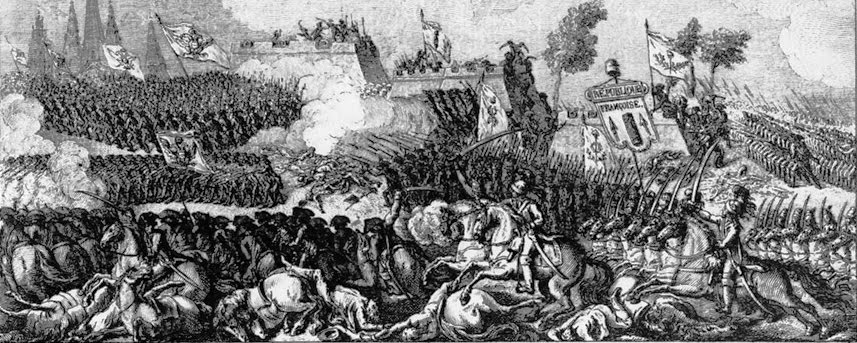Foremost, the ordre profond was
an ideal solution for the ancien régime armies because it could allow a
quick and decisive attack. While the seventeenth and early-eighteenth centuries
had been plagued by slow and destructive sieges and long and expensive
campaigns which often amounted to very little, the ordre profond
promised an end to such stalemates. Based on the experiences of the Seven
Years’ War, Henry Lloyd concluded that battles were inconclusive, stating that “no
kingdom is overturned – no nation is enslaved” by the recent wars. [1] By breaking the enemy line
swiftly while on the field, the ordre profond would ideally force a
retreat or surrender, and save the attacker from continuing a long campaign or
besieging enemy strongholds. Saxe, for example, suggested that if the column
could force a retreat, a commander could capitalize on the enemy’s sudden
weakness even against greater numbers: “The pursuit should be pushed to the
limit. And the retreat which had appeared such a satisfactory solution will be
turned into a rout. A detachment of ten thousand men can destroy an army of one
hundred thousand in flight.” [2] Furthermore, deploying
into an attacking column from the march was theoretically much faster than deploying
into line, and could therefore save hours of pre-battle preparation.[3] As a result, battle was
much easier to force upon an enemy.[4] Previously, an unwilling
enemy could avoid battle by not presenting an attacker with time and space to
deploy troops into line, gaining time to regroup his own army and wait for
reinforcements, and forcing the attackers to lose their advantage. However, the
ordre profond required less time and space, and could consequently force
battle whenever conditions were favourable. When battle was presented,
proceeding across the battlefield in column would save time and confusion by
allowing troops to navigate around obstacles and terrain quickly and
efficiently, a problem which had plagued the ordre mince.[5] In making battle swift,
the tacticians hoped the ordre profond would also make it conclusive.
Therefore, tacticians and philosophes hoped that the column would decide
not only the day, but the entire campaign. By reducing war to a single battle,
warfare would be less expensive, less destructive, more humane and, most
importantly, successful.
[1] Lloyd, quoted
in Starkey, 57.
[2] Saxe, “My
Reveries,” 161.
[3] Phillips, 219.
[4] Ostwald, “The
‘Decisive’ Battle of Ramillies,” 662.
[5] Griffith
suggests that in order to cross the battlefield in line, troops would
frequently have to break down into a column to bypass obstacles, then reform
line, disrupting the momentum of the advance greatly. Furthermore, he states,
the job of maintaining an organized line over what could easily by a 6-mile
long front was a “staff officer’s nightmare,” and offered little mobility.
Griffith, French Napoleonic Infantry Tactics, 6-7.

No comments:
Post a Comment